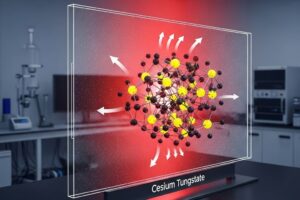Millable polyurethane rubber has become widely utilized due to its exceptional properties. Unfortunately, due to moisture exposure and subsequent hydrolysis reactions, polyurethane rubber can easily be affected by hydrolysis reactions which compromise its performance and service life; to overcome this challenge, carbodiimide anti-hydrolysis agents have emerged.
What is Millable Polyurethane Rubber?
Millable polyurethane rubber (MPR) is an elastomeric material. Here are the properties:
-High Elasticity : it can be stretched and deformed up to a certain extent before returning back into its original shape, with good mechanical resistance capable of withstanding certain forces. High Strength
– Wear Resistance: Capable of withstanding abrasion, making it suitable for applications where durability is key. Oil Resistance: Withstanding oils and lubricants without being affected negatively.
-Ozone Resistance: Less likely to be damaged by atmospheric ozone levels.
Due to its outstanding properties, ceramic is widely utilized across a range of fields including automobiles, machinery and aerospace.
Characteristics and Challenges of Millable Polyurethane Rubber
Millable polyurethane rubber boasts excellent properties such as high elasticity, high strength, wear resistance, oil resistance and ozone resistance; making it suitable for applications such as automobiles, machinery and aerospace. Unfortunately, its molecular structure contains easily hydrolyzable groups like ester or ether bonds which make it susceptible to hydrolysis reactions in humid environments or when in contact with water; leading to molecular weight decrease, mechanical property reductions and surface cracks appearing – seriously impacting its performance and service life.
Mechanism of Carbodiimide Antihydrolysis Agents
Carbodiimide anti-hydrolysis agents work through an effective reaction mechanism. When polyurethane rubber is exposed to moisture and starts hydrolyzing, carboxylic acid groups are created. Carbodiimide groups (-N=C=N-) in anti-hydrolysis agents react quickly with these carboxylic acid groups to form stable acylurea structures which consume acidic hydrolysis products and inhibit further hydrolysis reactions – this helps stop degradation while also increasing durability of polyurethane rubber products. This process not only stops degradation processes but also enhances stability and durability compared with standard products made of rubber compounds.
Application effects of carbodiimide anti-hydrolysis agents in millable polyurethane rubber systems
Improve Hydrolysis Resistance
Millable polyurethane rubber’s hydrolysis resistance has been significantly increased through adding a carbodiimide anti-hydrolysis agent, with significant performance gains shown during hygrothermal aging test results and performance decline rates significantly lower compared to rubber without an anti-hydrolysis agent. After extended hygrothermal aging periods, rubber with an anti-hydrolysis agent maintained good mechanical properties and appearance quality while remaining compliant.
Extension of Service Life
Carbodiimide anti-hydrolysis agents can effectively prevent hydrolysis reactions, prolonging the service life of millable polyurethane rubber. Anti-hydrolysis treated polyurethane rubber products may even be used in humid environments without significant performance degradation and damage over extended use periods.
Carbodiimide anti-hydrolysis agents can have a noticeable improvement effect on millable polyurethane rubber’s processing properties. Anti-hydrolysis agents can lower viscosity while improving fluidity for easier molding and demolding during processing; in addition, anti-hydrolysis agents reduce thermal degradation reactions, improving processing stability as a whole.
Precautions for proper application.
1. Dosage Control
To maximize performance from carbodiimide anti-hydrolysis agents, proper dosage regulation must take into account factors like type of polyurethane rubber used, its environment, and performance requirements. Too little may not achieve the desired anti-hydrolysis effect while too much could have an adverse impact on its properties.
2. Compatibility With Other Additives
Carbodiimide anti-hydrolysis agents may interact with other additives used in millable polyurethane rubber production and alter its properties, potentially leading to adverse reactions that could alter rubber properties adversely. Therefore, before purchasing anti-hydrolysis agents it is essential that their compatibility with other components be considered so that any negative reactions are avoided.
3. Storage Conditions
Carbodiimide anti-hydrolysis agents should be stored in an environment which is dry, cool and ventilated – away from direct sunlight and high temperature environments – where ventilation levels remain adequate. During storage, particular care must be taken to seal it properly to avoid moisture entering and diminishing effectiveness of anti-hydrolysis agent storage.
Carbodiimide anti-hydrolysis agents play a pivotal role in millable polyurethane rubber production. By adding anti-hydrolysis agents to polyurethane rubber production processes, their hydrolysis resistance, service life, processing properties and processing speed can be greatly increased. When selecting anti-hydrolysis agents to use in millable polyurethane rubber manufacturing applications, their effect should be maximized while considering compatibility issues between additives used and storage conditions to enhance performance and quality for millable polyurethane rubber production processes.







